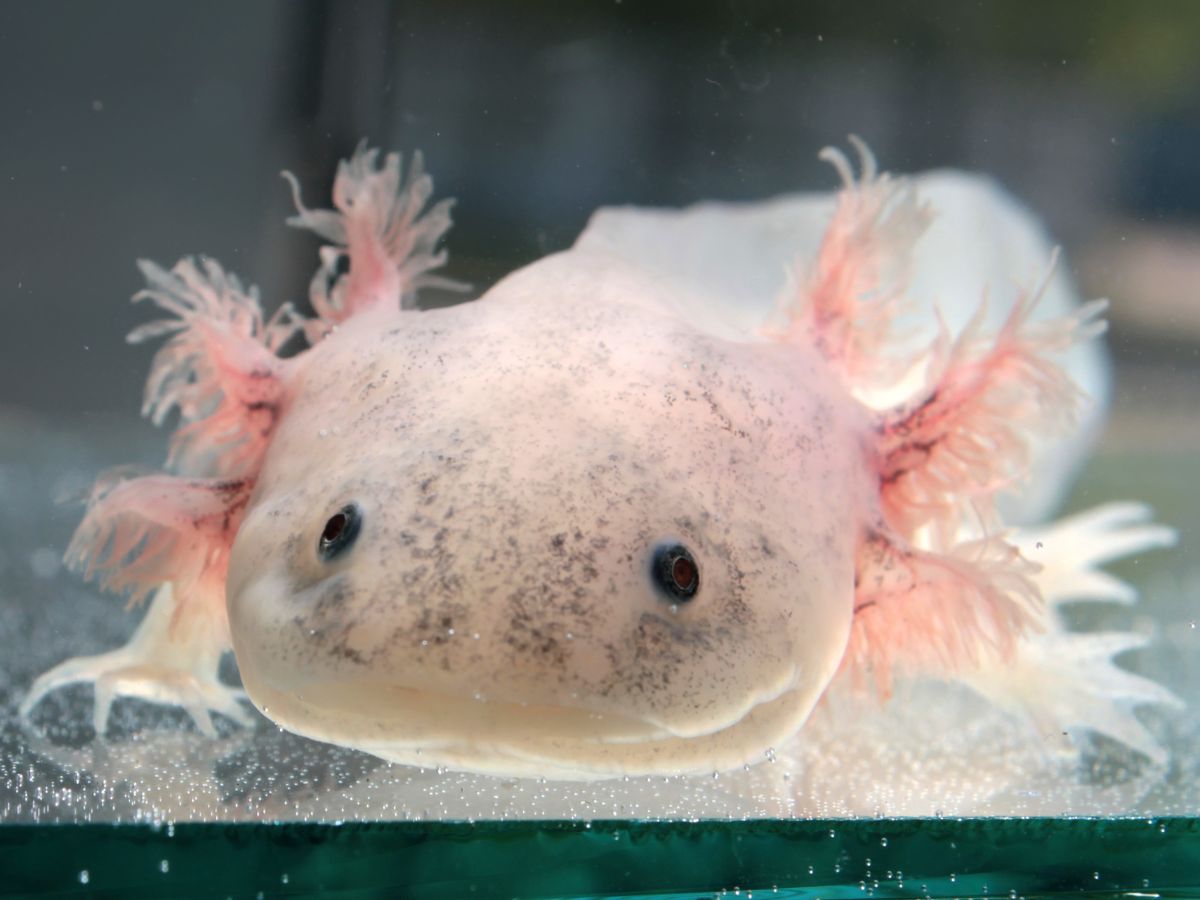Although axolotl are colloquially called the “Mexican walking fish”, it is not a fish, but belongs to the amphibian family. Axolotls are aquatic caudate amphibians and a close relative of the tiger salamanders.
Unlike other amphibians, axolotls remain in the larval stage for life and reach sexual maturity without metamorphosis.
What exactly are amphibians?
Amphibians are animals that typically rely on water in their environment. They need bodies of water to reproduce and lay their eggs in.
For example, amphibians include frogs, toads, salamanders, and newts. Also, all amphibians have different stages of development. The eggs develop into water-living larvae that breathe with the help of gills and cannot leave the water. The larvae undergo metamorphosis into adults that can live on land. Typically, during metamorphosis, the animals develop legs and switches from gills to breathing with their lungs.
Axolotls actually have a special development among amphibians in that they do not undergo metamorphosis and remain in the permanent larvae stage. The peculiarity that axolotls become sexually mature in their permanent larvae stage is called “Neoteny“.
Why don’t axolotl go through metamorphosis?
The adult form of the axolotl is very similar to that of a tiger salamander, but natural metamorphosis is very rare. Axolotls have a congenital thyroid defect that causes a deficiency of the hormone thyroxine, which would trigger metamorphosis into an adult axolotl.
What triggers metamorphosis in axolotls?
In axolotls, metamorphosis can be triggered by an injection of the thyroid hormone thyroxine.
Increased amounts of iodine also lead to increased thyroxine production. Therefore, you should only use non-iodized salt when giving your Axolotl a salt bath.
For the Axolotl themself a metamorphosis is usually bad news, often they do not survive long in their adult form and are much more susceptible to diseases and infections.
In very rare cases it can happen that axolotls go through metamorphosis on their own, this is usually because some axolotls have been crossed with other species, such as the tiger salamander.
The gene, which is responsible for the lack of color in the albino axolotl, comes for example from a tiger salamander and is not found in wild axolotls. Such animals may also carry genes that ensure that their thyroid produces the appropriate hormones for metamorphosis and so, in very rare cases, natural metamorphosis may occur.
Can an axolotl also live on land?
Although axolotls spend their lives in water they can survive for short periods on land. Since they have both gills and lungs and can also take in oxygen through their skin, they can continue to breathe a bit outside of the water.
Thus, you can take Axolotl out of its tank and put it in another container filled with water and it will not run the risk of suffocation. However, it should not be out of the water for too long because it stresses the animals very much and their skin dries out quickly. Therefore it is best not to take Axolotl out of the water at all or only if it is absolutely necessary.
Adult axolotls after metamorphosis, on the other hand, only need a humid environment and access to water, but can otherwise survive on land without problems, similar to a salamander.
Can axolotls be kept with other amphibians?
No, you should not keep axolotls with other amphibians. Although the thought may seem obvious, since many amphibians require the same environmental conditions as the Axolotl, they do not socialize well together.
Small amphibians would be quickly eaten by the axolotl, because it snaps at everything that swims in front of its mouth and has the right size. For example, small frogs could be in danger of being eaten and larger ones could injure the axolotl itself.
In general it is not recommended to cohabitate Axolotl with other animals other than its own species.

Do axolotls and amphibians eat the same food?
Both larval and adult amphibians are mostly predators, eating anything that fits in their mouths. Their diet consists of insects, snails, and worms, among other things.
Axolotls can be fed earthworms, mosquito larvae, woodlice, or fly maggots. They can eat most amphibian food, although it is better to buy food tailored to axolotls.
Here is a whole article about feeding axolotls.
Conclusion
Axolotls are amphibians, not fish as you might think because of their aquatic lifestyle. They share many similarities with other amphibian species, eating similar foods and even being able to survive out of the water for a short period of time.
But they are also a special case because they do not undergo metamorphosis like other amphibian species such as frogs and remain in the larval stage throughout their lives.

